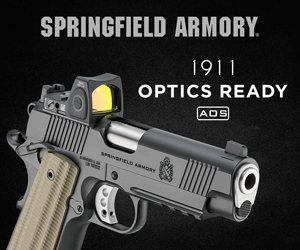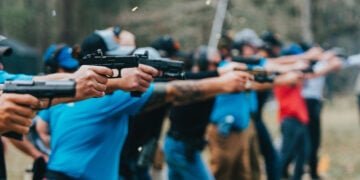PONTIAC, MI – A shooting at a convenience store in Pontiac on Tuesday night left a man dead and his girlfriend seriously injured, raising important considerations about ammunition choices in self-defense situations.
According to the Royal Oak Tribune, the incident occurred shortly before 11:30 p.m. in the 600 block of Cesar Chavez. The alleged shooter, a 21-year-old Pontiac man, was reportedly assaulted by Darien Louis Bragg, 23, and his 23-year-old girlfriend while he was at the store counter to purchase items.
Witnesses stated that Bragg and his girlfriend attacked the man from behind, leading to a struggle that ended with all three on the ground. The 21-year-old man then drew a handgun and fired a single shot. Bragg suffered a fatal gunshot wound to the chest, and the bullet continued through his body, striking his girlfriend in the abdomen.
Bragg was pronounced dead at the scene, while his girlfriend was hospitalized in serious condition as of Wednesday morning.
The shooter remained at the scene and cooperated with authorities. He was detained and the case will be reviewed by the Oakland County Prosecutor’s Office to determine whether charges will be filed or if the shooting will be deemed self-defense.
This incident underscores the critical importance of ammunition choice in self-defense. The bullet used in the shooting appears to have overpenetrated, resulting in unintended harm to a bystander. This risk is often minimized with Full Metal Jacket (FMJ) bullets, which are more likely to penetrate through a target and potentially cause collateral damage.
Hollow point bullets, on the other hand, are designed to expand upon impact, dissipating energy and reducing the risk of overpenetration. The primary function of bullet expansion is to ensure that the bullet stays within the target, thereby reducing the chance of injuring others.
Over the years, my philosophy has become that the primary function of bullet expansion from such features as hollow points is to dissipate energy, reducing the risk of overpenetration. If the bullet mushrooms to a larger diameter in the process, that’s an added benefit. However, some exceptions exist, such as low-energy cylindrical wadcutter bullets in .38 Special revolvers with 2” barrels, where reliable expansion with +P loads may generate more recoil than the shooter can tolerate.
This tragic event serves as a reminder of the importance of responsible ammunition selection for those who carry firearms for self-defense. Understanding the implications of overpenetration can make a significant difference in ensuring the safety of all individuals involved.











How was the girl a “bystander” when she attacked the shooter the same way as her dead boyfriend, this is definitely justified and the shooter was just being frugal with this ‘obama’ economy by “killing two birds with one stone”, and it doesn’t matter one whit what type of bullet the shooter used, a .22 short would have penetrated a head the same way ???
Actually there’s no way that a .22 short would’ve penetrated a head, passed completely through it and then wounded the next person in the line of fire. It also does make a difference what kind of ammo that you use. Personally I generally have light for caliber bullets in my defense loads for exactly that reason.
That still leaves an unanswered question; How was she a bystander, and not an accomplice to the assault?
An FMJ round does not minimize penetration, it maximizes penetration. I don’t know if you don’t understand that or you just made a mistake in this article. It makes sense to use hollowpoints for self defense for every possible reason. They’re less likely to overpenetrate, they transmit more energy to the target/offender, and they create more damage causing the offender to stop his/her actions faster. You really need to proofread your articles before posting so that you don’t confuse new gun owners or concealed carriers especially on something this important.